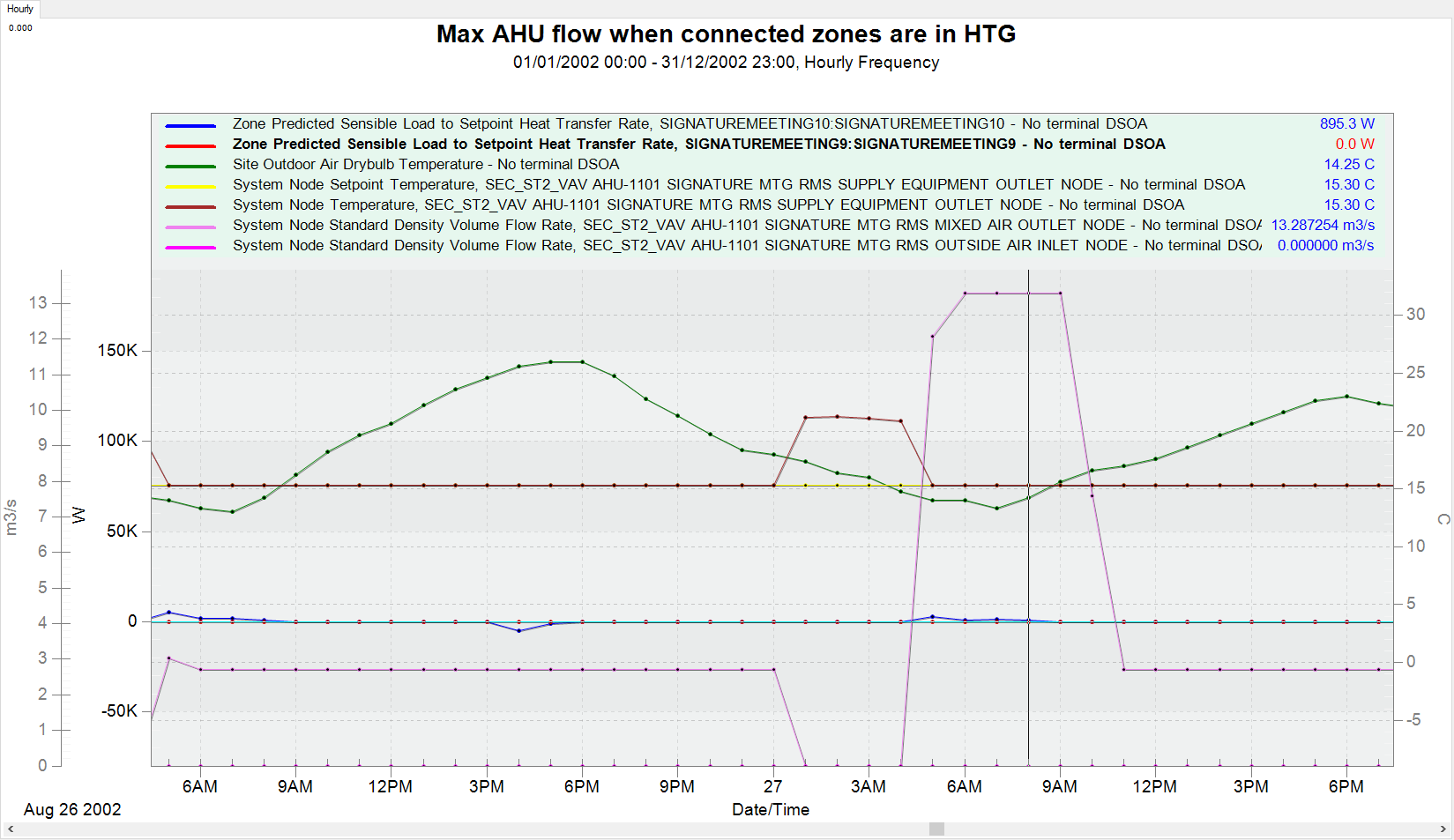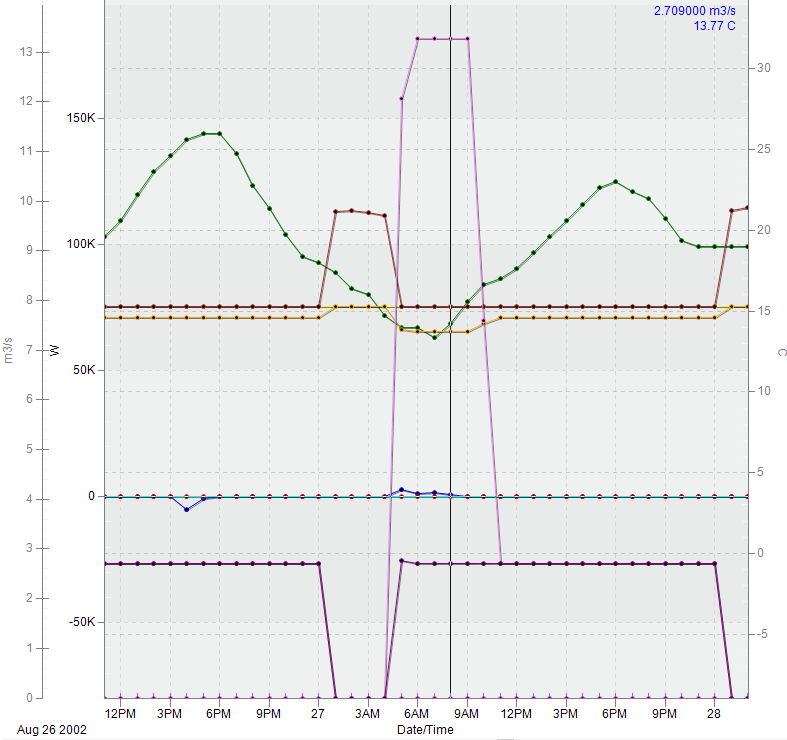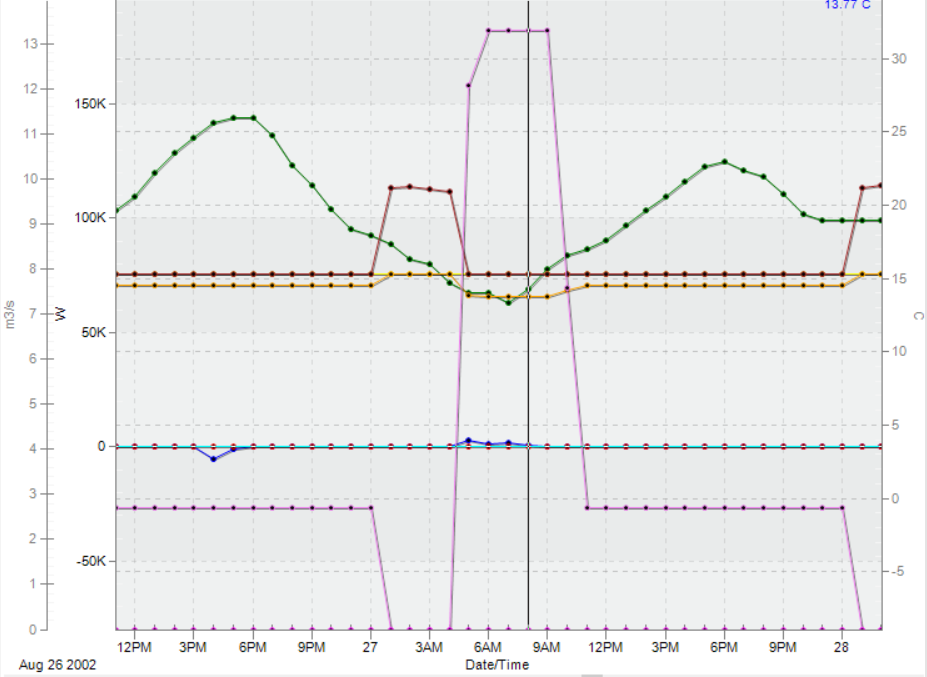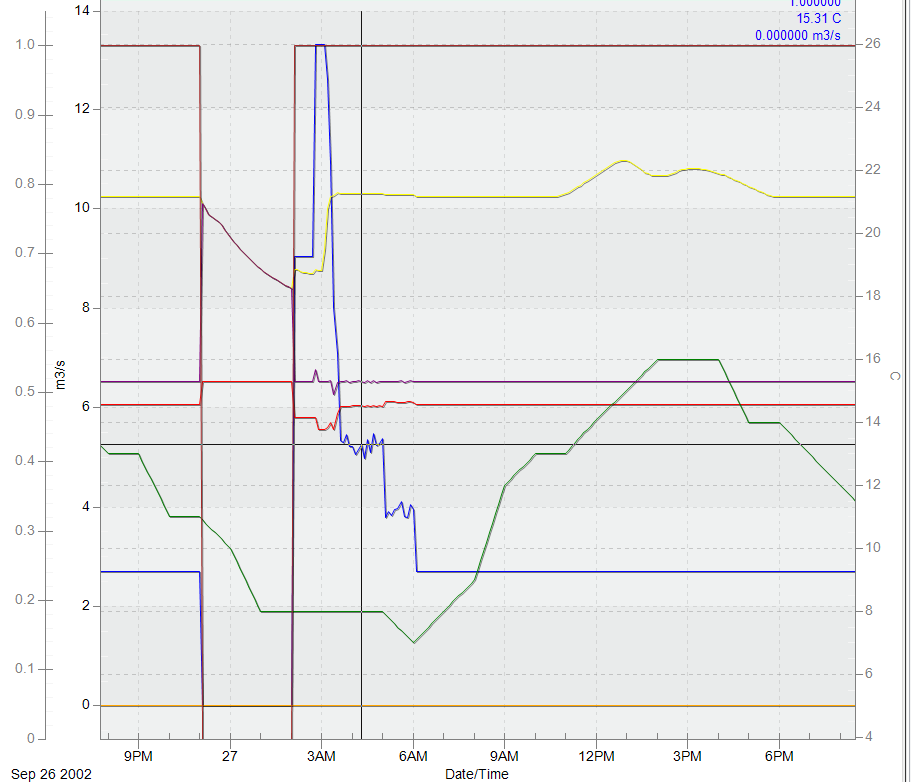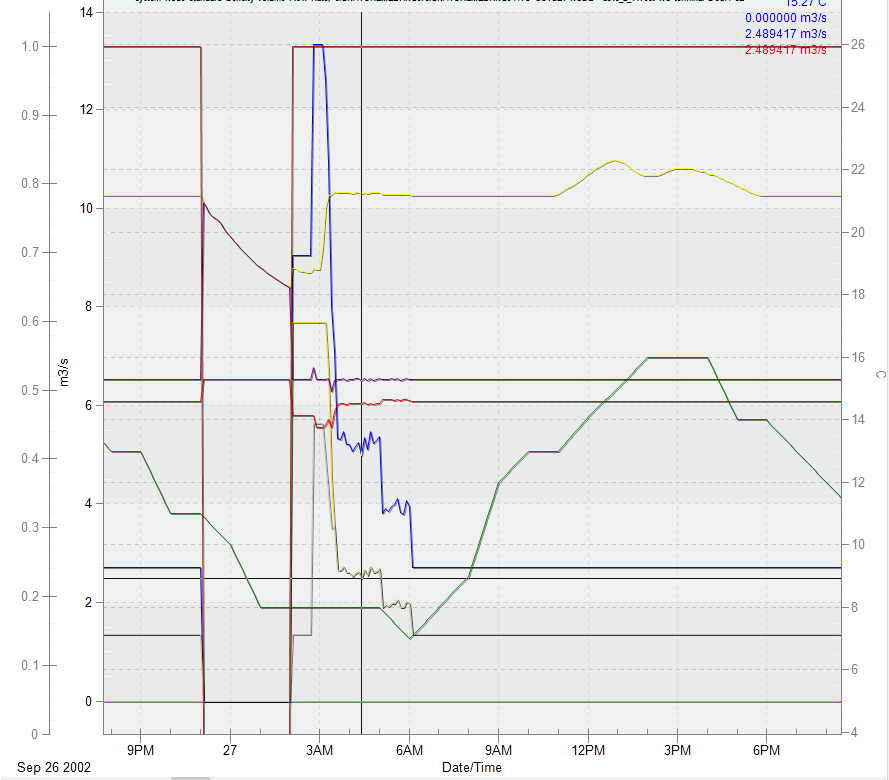I've been trying to troubleshoot this issue and have run out of ideas. Any suggestions welcome. The system is a VAV AHU with chilled water and heating hot water coils. There are only two zones served by the system. The hot water coil is located upstream of the chilled water coil, but I don't believe that is relevant. There is no OSA flow on the system (this is due to low occupancy and the use of IndoorAirQualityProcedure to determine the ventilation required.) Currently the minimum outside air value is input as zero (I'm aware there should be area-based ventilation provided such that the minimum is not zero, and I plan to fix this later.) The AHU heating coil is set up to heat only up to 10C/50F. The AHU cooling coil is controlled using the SetpointManager:Warmest. At times when there is a heating load in the connected zones, the AHU is supplying at the maximum design flow rate. The system supply temperature is at the maximum reset temp of 15.3C/60F, (as expected since no connected zone required cooling). This results in considerable cooling at the AHU cooling coil, as needed to cool the mixed air (which is 100% return air since zero system OSA flow), followed by considerable reheat at the zone terminal reheat coils as needed to maintain the heating setpoint temperature in the zones.
No heating occurs at the AHU heating coil. In the case of heating load at all connected zones, the AHU should supply at minimum flow, but here it is supplying at maximum flow.
One idea I had was that the DesignSpecification:OutdoorAir Inputs at the terminal units could be forcing the terminal flow rates up in an effort to deliver needed outside air (since the system has zero outside air, but the DSOA object would indicate some is needed in the zone.) I have already tried removing that input, but the results did not change.
Another idea I had about what might be going on is that the heating load at the connected zones, combined with a very low heating temp (10C/50F) from the AHU could erroneously result in maximum flow at the system? (In this case we have a negative supply air to room air temp difference, and the airstream delivered will actually result in cooling, not heating of the zone. This should not be the result but I was thinking about the fact that very low delta T could result in max system flow) Any thoughts on how I might test to see if this is the problem?
Any ideas about what might be the problem? I've been looking at this for a long time - any new ideas will be much appreciated.
Here is a graph showing the system flows, predicted load to setpoint for the two connected zones, system SAT, system flow rate, and system OSA flow rate:
